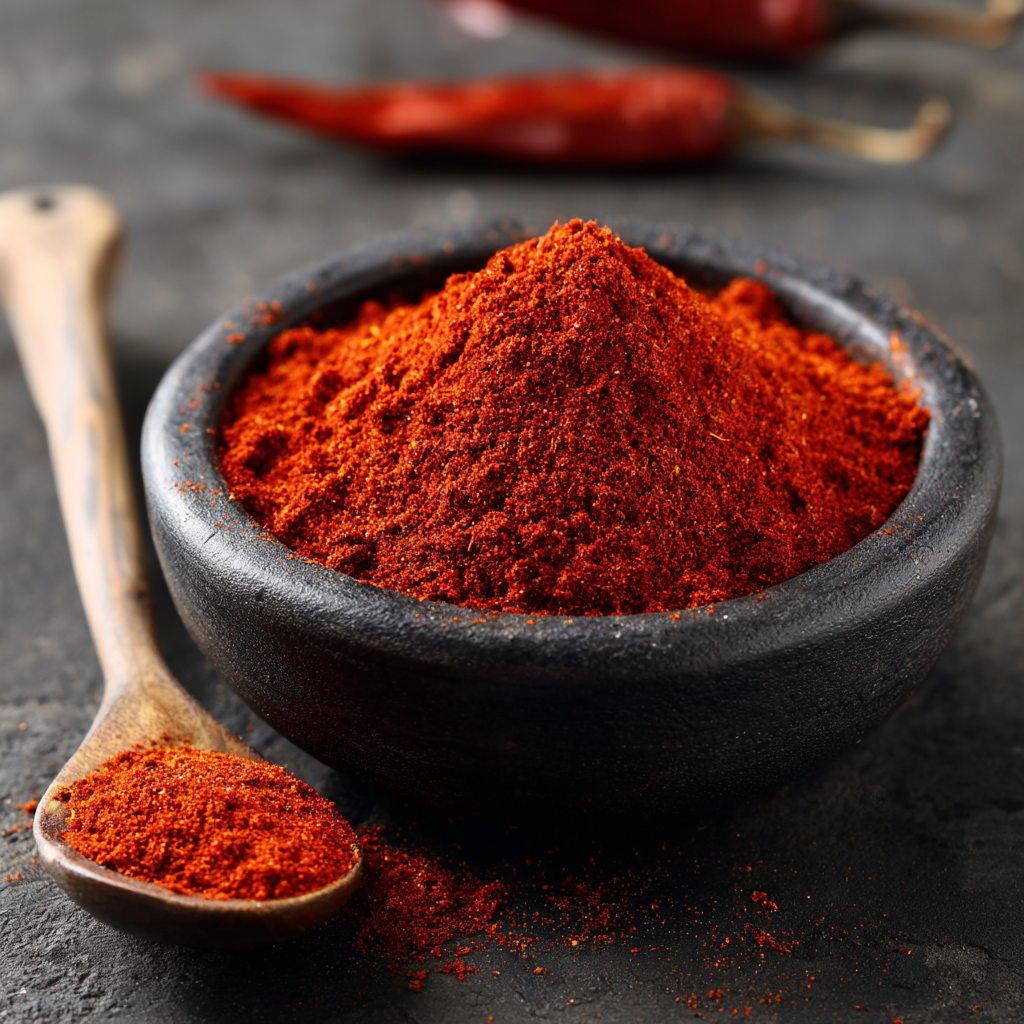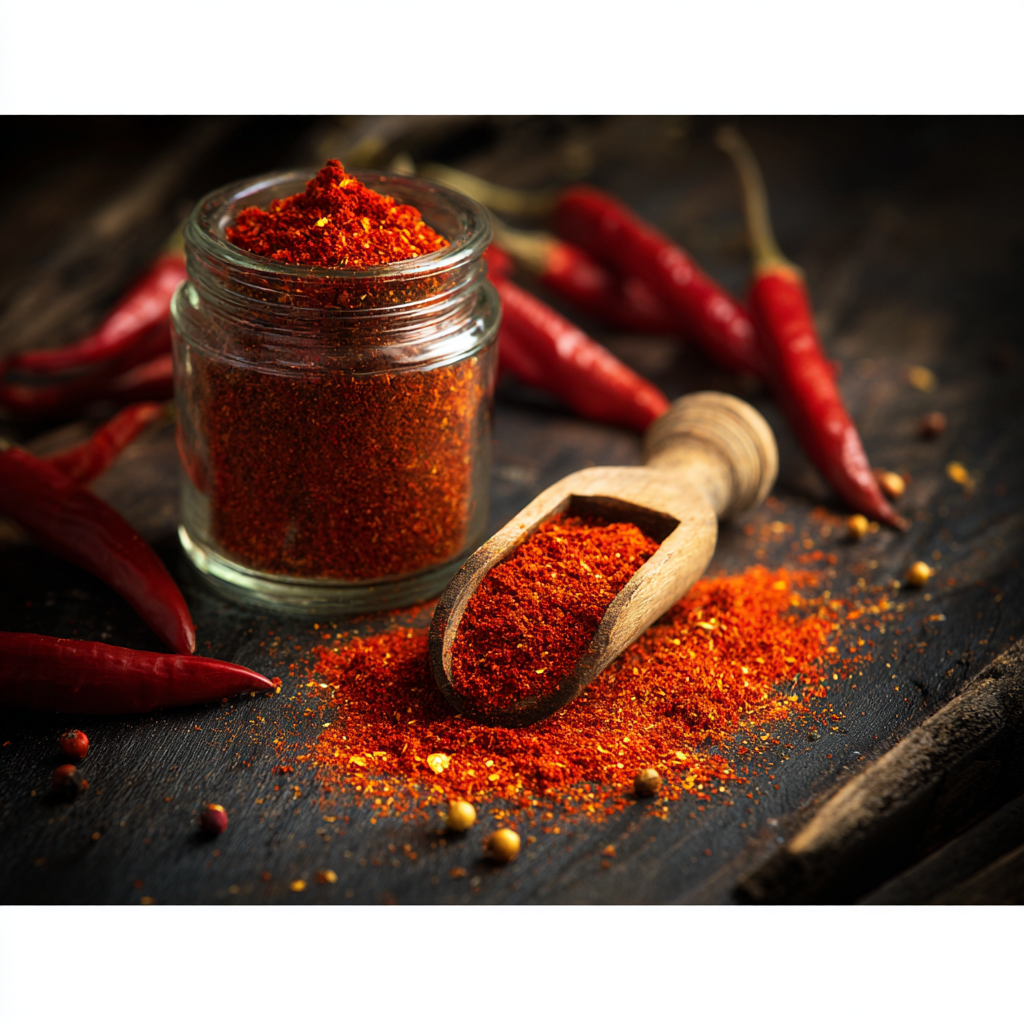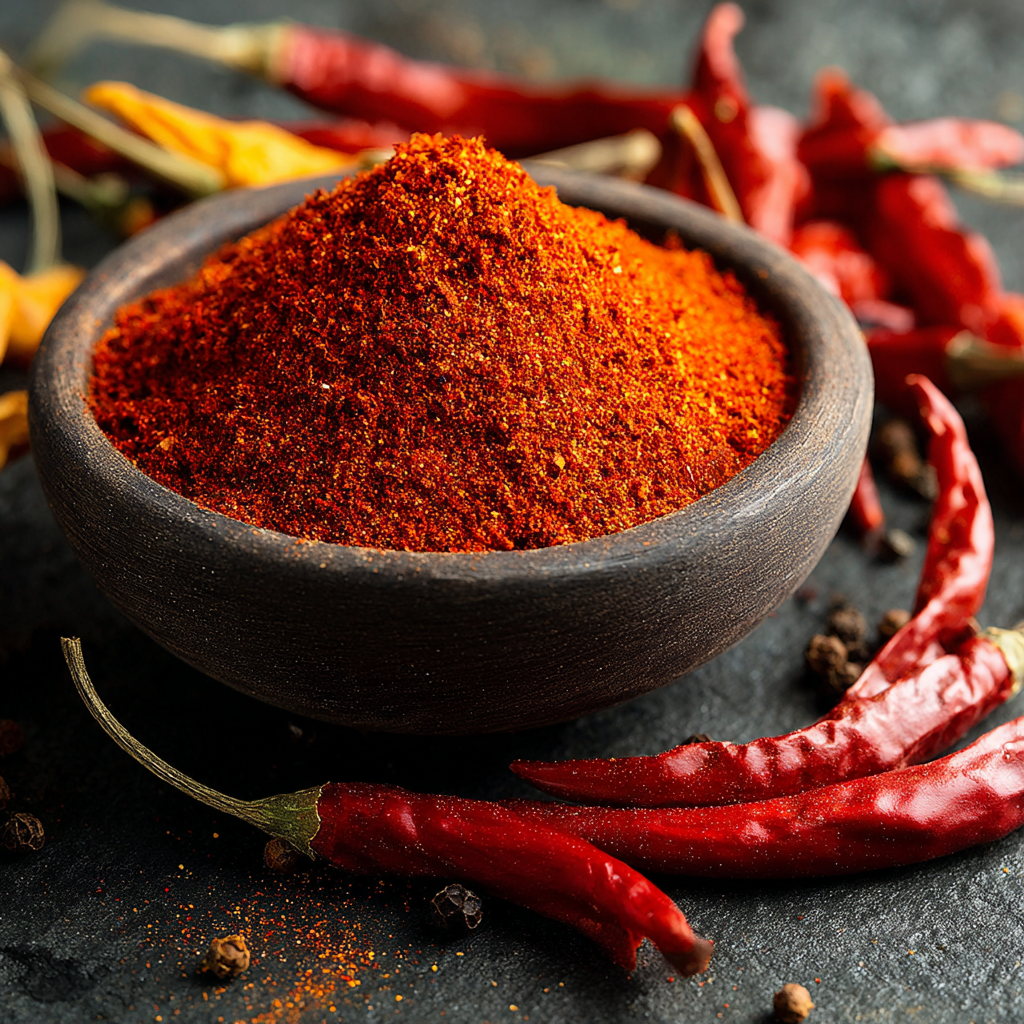As spice lovers increasingly seek out bold and innovative ways to enhance their culinary experiences, the demand for Pure Capsaicin Powder has surged. This powerful spice, derived from chili peppers, is renowned for its intense heat and unique flavor profile. However, the quest for spice doesn't end with Pure Capsaicin Powder; many enthusiasts are now exploring natural alternatives that can deliver the same fiery kick while offering additional health benefits. This blog delves into these alternatives, showcasing their advantages and discussing the implications for both flavor and wellbeing. Additionally, we will address concerns surrounding customer support and maintenance costs associated with these alternatives, as well as shed light on the future of spice innovation.

Join us as we embark on a flavorful journey through the world of natural spices that promise to excite both the palate and the culinary imagination.
For spice enthusiasts looking to explore natural alternatives to pure capsaicin powder, there are several exciting options that promise to satisfy your craving for heat without the intense burn. Ingredients like ginger, black pepper, and horseradish offer unique flavors and varying levels of spiciness that can elevate your culinary creations.
 Ginger, for instance, not only adds a warm, zesty kick to dishes but also boasts anti-inflammatory properties, making it a healthy alternative.
Ginger, for instance, not only adds a warm, zesty kick to dishes but also boasts anti-inflammatory properties, making it a healthy alternative.
When substituting capsaicin, consider how the flavor profiles of these alternatives impact your recipes. Black pepper provides a sharpness that can enhance savory meals, while horseradish’s pungent heat works wonders in sauces and dips. To get the best out of these ingredients, start with small quantities and adjust based on your personal heat tolerance.
Tip: Experiment with layering flavors by combining different spices. For example, mixing ginger with black pepper can create a warming effect that mimics the heat of traditional chili powders. Don’t hesitate to try out fresh herbs like cilantro or basil, which can complement spicy dishes while providing their own unique freshness.
Natural spices offer a wealth of health benefits that often surpass those of pure capsaicin powder, especially for those seeking both flavor and wellness in their diets. Spices like turmeric, ginger, and cayenne pepper are known not only for their ability to enhance the taste of dishes but also for their medicinal properties. Cayenne pepper, which contains capsaicin, is celebrated for its potential to boost metabolism and assist in weight loss. Furthermore, research highlights that spices can alleviate symptoms of arthritis and support overall health by providing anti-inflammatory and antioxidant effects.
Incorporating these natural spices into your meals can be a delightful way to promote health without relying solely on concentrated extracts like pure capsaicin powder. For instance, turmeric is praised for its anti-inflammatory effects, while ginger is effective in easing digestive issues and nausea. By choosing a variety of herbs and spices, you can create meals that are not only flavorful but also packed with health benefits, making them an excellent alternative for spice enthusiasts looking to enhance their culinary creations and well-being.
| Natural Spice | Main Health Benefits | Scoville Heat Units (SHU) | Key Nutrients | Uses in Cooking |
|---|---|---|---|---|
| Cayenne Pepper | Boosts metabolism, pain relief | 30,000 - 50,000 | Vitamin A, Vitamin C | Soups, sauces, marinades |
| Jalapeño | Rich in antioxidants, stimulates digestion | 2,500 - 8,000 | Vitamin C, Folate | Salsas, salads, toppings |
| Sriracha | Enhances mood, antioxidant properties | 2,200 - 3,000 | Vitamin A, Vitamin C | Dipping sauces, marinades |
| Paprika | Anti-inflammatory, rich in antioxidants | 100 - 3,600 | Vitamin E, Vitamin B6 | Stews, casseroles, seasoning |
| Chipotle | Promotes weight loss, supports heart health | 2,500 - 10,000 | Vitamin C, Potassium | Tacos, salads, marinades |
When it comes to exploring natural spicy ingredients, many ethnic cuisines around the world offer an exciting array of flavors that outshine the pure heat of capsaicin powder. In Indian cuisine, the use of fresh chilies, mustard seeds, and even aromatic spices like cardamom and cumin creates a complex profile that warms the palate without overwhelming it. Dishes such as spicy curries and chutneys highlight the balanced interplay of heat and flavor, often incorporating ingredients like fresh ginger and garlic to enhance the overall experience.
Similarly, Thai cuisine embraces the essence of heat through ingredients like bird’s eye chilies and galangal. The balance between sweet, sour, and spicy elements is what makes Thai dishes truly mesmerizing. For instance, the famous Tom Yum soup showcases not only heat but also a depth of flavor brought forth by lemongrass and lime leaves. Additionally, Mexican cuisine utilizes a variety of peppers, such as ancho and chipotle, to add rich, smoky notes alongside the heat, demonstrating that spice can be an integral part of creating depth in culinary traditions. By embracing these natural alternatives, spice lovers can enjoy heat that is both authentic and enriched with diverse flavors.
When creating unique spice blends, exploring natural alternatives to pure capsaicin powder can open up a world of flavor and health benefits. According to a report by the International Journal of Food Sciences and Nutrition, natural spices such as ginger, turmeric, and black pepper not only enhance flavors but also offer significant health properties, including anti-inflammatory effects and antioxidant activity. For instance, turmeric contains curcumin, known for its potential in reducing inflammation, making it a great alternative for those who seek a spicy kick without capsaicin's intense heat.

To craft your own spice blends, start by combining these natural alternatives with complementary herbs. A blend of smoked paprika, garlic powder, and ground cumin paired with a touch of ginger can provide a warm, zesty flavor profile that works wonderfully in numerous dishes. According to the Flavour Journal, incorporating ingredients like cinnamon and nutmeg alongside traditional spicy elements can create a more complex and rounded flavor experience. Experimenting with ratios will allow spice lovers to achieve the desired level of heat while leveraging the health benefits found in nature’s bounty.
The exploration of natural alternatives to pure capsaicin powder has unveiled a fascinating array of flavor profiles that spice lovers can enjoy. Recent research has identified natural compounds capable of suppressing the intense heat associated with chili peppers, shifting our understanding of pungency and its impact on culinary experiences. This breakthrough challenges the traditional Scoville scale and opens the door to discovering milder yet flavorful options that can enhance dishes without overwhelming the palate.
Among the highlighted natural sources, piquin chili stands out not only for its unique taste but also its impressive health benefits. Rich in capsaicinoids and carotenoids, this chili variant offers antioxidant properties that elevate its status in the realm of nutraceuticals. Moreover, the metabolism of compounds like dihydrocapsaicin leads to various metabolites, each contributing to a nuanced flavor profile that can transform the spicy experience. Embracing these natural sources allows spice enthusiasts to enhance their culinary creations while reaping the potential health benefits inherent in these flavorful ingredients.
This chart compares the heat levels and flavor profiles of various natural sources of capsaicin. The data reflects the Scoville Heat Units (SHU) and the flavor characteristics of each source, providing spice lovers with insights into their options.
